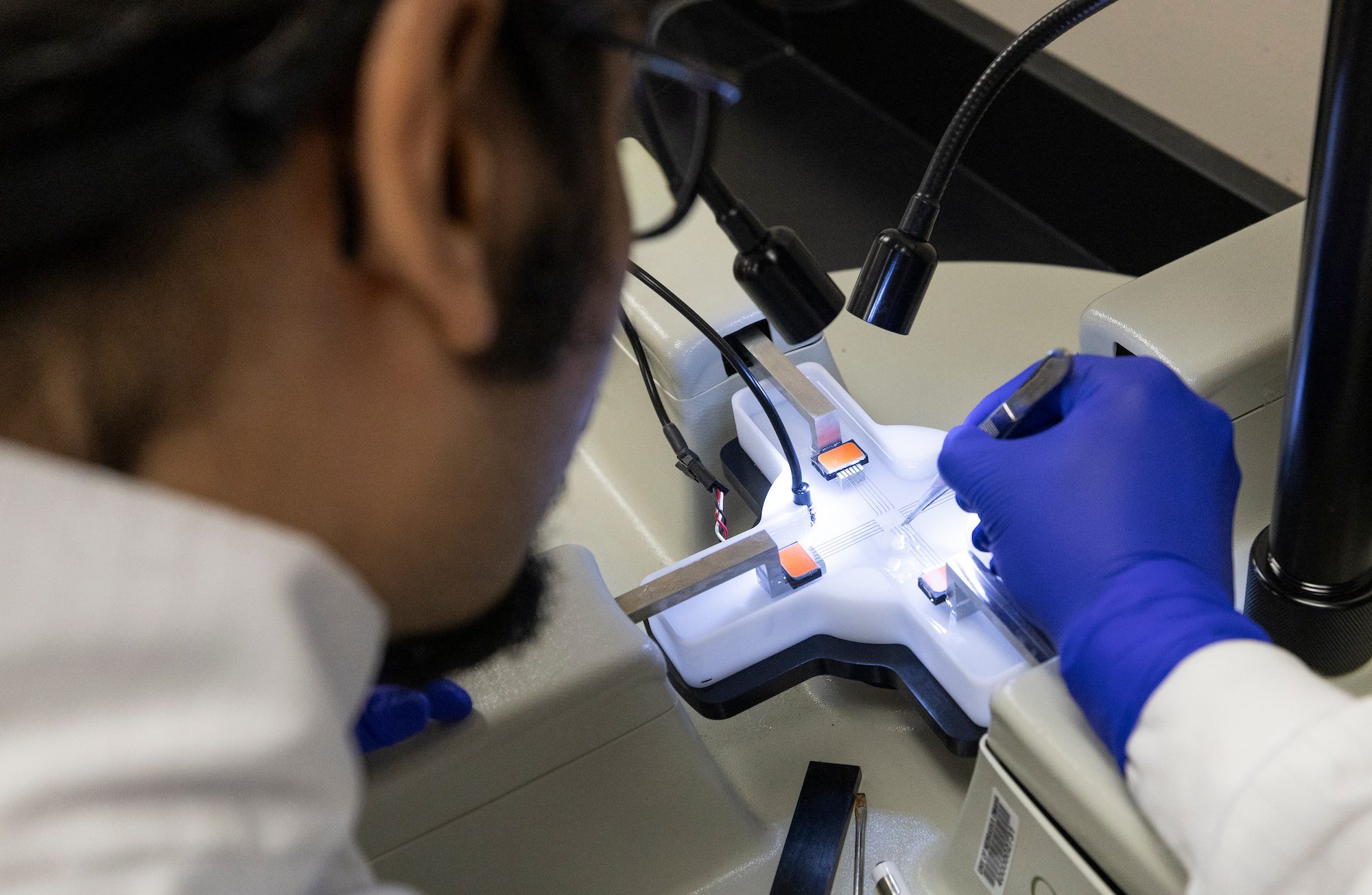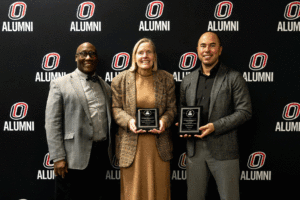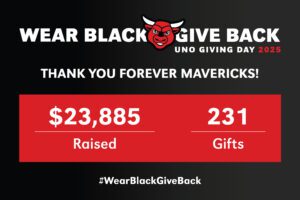by Amanda Craig
In February, UNO’s Department of Biomechanics received an $11 million grant from the National Institutes of Health’s (NIH) Centers of Biomedical Research Excellence (COBRE). With this grant, researchers can develop innovative solutions for cardiovascular disease treatment in the newly established Center for Cardiovascular Research in Biomechanics (CRiB). This landmark grant underscores UNO’s commitment to advancing cardiovascular health through cutting-edge research and innovative solutions.
Alexey Kamenskiy, Ph.D., Chair of the Department of Biomechanics and leader of the CRiB initiative, emphasized the significance of this COBRE grant and the impact it will have.
“It provides essential funding to build the biomedical research infrastructure needed to address critical challenges in cardiovascular health. We aim to achieve significant advancements in creating more durable and effective vascular stents and grafts, enhancing the healing of ischemic ulcers, and improving overall patient outcomes. The center’s interdisciplinary approach and strong industry collaborations are expected to accelerate the translation of laboratory discoveries into clinical applications, ultimately benefiting patients globally,” Kamenskiy said.
This recent milestone is just the latest in a long line of developments for the Department of Biomechanics. This is actually the second COBRE grant that UNO’s biomechanics program has received; the first was a $10.1 million award in 2014, funding human movement variability research and the start of the Center of Research in Human Movement Variability (MOVCENTR).
The MOVCENTR, led by Nick Stergiou, Ph.D., studies motor related disorders in the neuromuscular system and has created new tools and techniques for diagnosis, rehabilitation and therapeutic intervention of movement disorders.
“The establishment of MOVCENTR through the first COBRE grant has been a resounding success,” Kamenskiy said. “MOVCENTR has supported over 200 students, more than 50 faculty members and over 400 research projects. It has produced numerous scientific publications and had a $27.5 million economic impact on the Omaha metropolitan area, delivering a $1.87 return on investment for every $1 of federal funding.”
When the biomechanics program at UNO was established as its own department in 2016, there were three faculty members who all specialized in human movement variability. Since then, the department has grown substantially, now home to 18 tenured and tenure-track faculty members, a 53,000-square-foot Biomechanics Research Building and a range of interdisciplinary studies. It remains the only department in the U.S. that is solely dedicated to biomechanics.
That dedicated focus on biomechanics has garnered national recognition and considerable funding from federal and private organizations. The department has greatly benefited from partnerships and collaboration between industry partners like Live On Nebraska, clinicians, researchers and community members.
This has allowed cutting-edge research and the ability to implement their discoveries in real-world applications. It is a leader in the field, drawing in myriad researchers and students at all levels.
Elizabeth Caldwell earned her bachelor’s degree in biomechanics from UNO and is now a Ph.D. student in UNO’s Biomechanics and Kinesiology program. Immediately interested in the research aspect of biomechanics, she stayed because of the knowledge, investment and collaborative spirit of the professors and students in the department.
“One of the projects I am currently working on involves the manufacturing of electrospun nanofiber stent grafts that are currently undergoing pre-clinical testing,” Caldwell said. “I learned so much over the course of this project; I learned lab skills like electrospinning, SEM imaging and mechanical testing practices, but I also discovered that I would like to pursue a career in research.”
She has also begun work with the CRiB program and is excited for the potential of those projects.
The Department of Biomechanics’ push for interdisciplinary collaboration created an easy pathway for Ph.D. student and graduate research assistant, Ali Zolfaghari Sichani. His bachelor’s and master’s degrees in engineering provide him with specific skills and knowledge that have strengthened his research at UNO.
“I am eager to enhance my scientific expertise and apply practical knowledge to both academic and industry challenges. I aim to innovate medical devices that address clinical challenges, particularly in cardiovascular health, ultimately improving patient outcomes,” he said. “I am currently involved in the CRiB program, which provides invaluable resources, including access to clinicians and experimental facilities.”
Looking ahead, Chair Kamenskiy sees a great deal of potential for the department to continue its mission of learning and improving people’s lives.
“The department will strengthen its cardiovascular biomechanics portfolio, focusing on the development of personalized treatment approaches, advancing the use of endovascular surgical technologies, wearable devices for real-time health monitoring and develop interventions that improve the quality of life for the elderly,” he said. “Additionally, the department will continue to strengthen its interdisciplinary collaborations and industry partnerships to drive innovation and translate research findings into practical healthcare solutions.”




